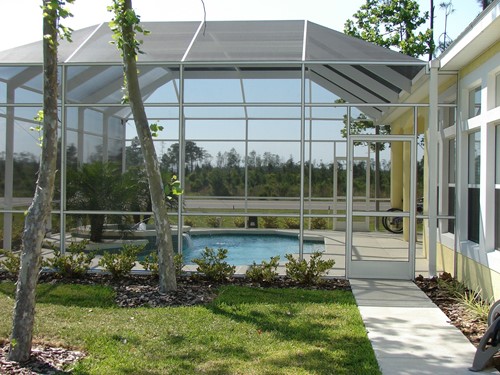
When rain, bugs and other issues have you avoiding your open porch, a screened-in porch might be the answer. Screened-in porches offer shelter from the elements and stop bugs from getting in. These porches can also make it safer for pets to sit outside with you, since they can’t run off. If you’re planning to turn an existing porch into a screened-in one or build a whole new one, it’s important to keep these helpful tips in mind.
Screen Material
The type of material you use for your screened-in porch is one of the biggest decisions to make. Screens are available in different materials, such as hand-stretched screens and fiberglass screens. Compare the pros and cons of each screen material to make sure you choose one that offers durability. Otherwise, you could end up replacing your porch screens much sooner than you expected. When choosing screens, you should also keep in mind that certain screen tints help reduce glare from the sun. For example, gray-tinted screens can help block sunlight.
Porch Material
The screens are only one part of your screened-in porch. You’ll also need to choose materials for other components, such as interior trim, flooring and framing. Several materials are available, such as vinyl, pressure-treated wood and cedar. Choose materials that give your screened-in porch the look you want while also offering a high level of durability. You can also add decorative features inside your porch, including beadboard, for added visual appeal.
Porch Doors
Screened-in porches often have a door that makes it easy to get out to the yard, as well as a door that leads into the house. The doors for your screened-in porch should be made of sturdy material, such as aluminum, that can withstand wear and tear. When you choose doors for your screened-in porch, you should also consider their placement. Porch doors shouldn’t block any traffic coming from inside your house when they open and close.
Electrical Equipment
Your open porch might have nothing other than an outlet as far as electrical equipment, but a screened-in porch is different. Screened-in porches can have ceiling fans, light fixtures and even flat-screen TVs. When planning your screened-in porch, you’ll need to factor in your electrical needs, such as making sure you have the right wiring and enough outlets.
Porch Roof
The roof on your screened-in porch can enhance its appearance and provide shelter from rain. Choose a roof style that complements the rest of your home exterior, so your screened-in porch won’t clash. You’ll also need to consider the amount of natural light you want in your porch when choosing a roof for it. Some screened-in porch roofs allow more light compared to others.
About the Author

Matt Mihalcin
Matt has been in Real Estate since 2006 in the Denver area. He is a 3rd generation Colorado native of 30+ years who currently lives in Broomfield. He leverages his experience and network to save clients time and money for easy and low stress transactions. He enjoys mountain biking, skiing and hiking in his free time.
